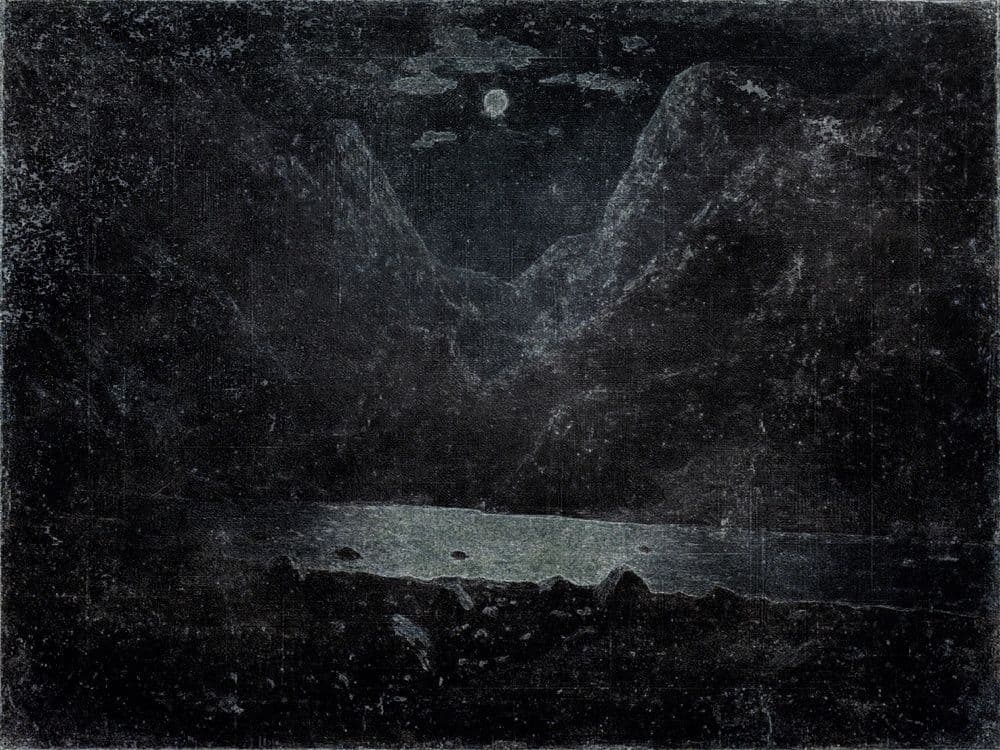In the ever-evolving landscape of crypto art, a recent incident involving a piece titled 'PALE MOONLIGHT' has ignited a fervent discussion within the community, this controversy, centered around a work shared by an unknown new account called NO1, encapsulates the complex interplay between art, authenticity, and value in the digital age.
The Emergence of 'PALE MOONLIGHT'
'PALE MOONLIGHT' appeared on the scene when NO1 tagged multiple collectors and active crypto art patrons in a tweet, boldly proclaiming the piece's inevitable collection by the era's great patrons.
a patron, guided by destiny's unseen hand, has heeded the call, setting in motion the auction for my genesis.
— NO1 (@IamNO1art) February 25, 2024
i am the origin. i am the alpha. i am NO1.https://t.co/l4GKWpFsmspic.twitter.com/lZRIE05Zlf https://t.co/gDRHkkoMpC
the artwork quickly caught the attention of 787, who was tagged in the initial post and found himself captivated by the piece's haunting beauty.
Was shilled below and found my inclusion hilarious… but I viewed the art and truthfully found it hauntingly beautiful, and my mind kept going back to it, & so I bid. I don’t know who they are, & I don’t know their process, but I love the art.
— 787 (@FKA787) February 26, 2024
“Pale Moonlight” by @IamNO1art https://t.co/RWZw9VKz7w pic.twitter.com/UMZA1d6eQz
His decision to acquire 'PALE MOONLIGHT' for 0.1 ETH was driven by an appreciation for the art itself, despite knowing little about the artist or their process.
The Revelation and Reaction
The narrative took a turn when it was revealed that 'PALE MOONLIGHT' was not an original creation but rather "The Darial Gorge" by Arkhip Ivanovich Kuindzhi, altered with a digital filter.
hate to be that person, but this is just The Darial Gorge by Arkhip Ivanovich Kuindzhi with a filter on top pic.twitter.com/BNOfmSYpen
— █̶̳̘͛̄̃͒̄̃͜█̴͇̱̅͒̅█̵̻̣̝͒̈̄̈͝͝█̴̞̜̻̝͍̂̽͜█̷̢ (@SHL0MS) February 26, 2024
This revelation sparked a spectrum of reactions within the community, at the heart of the debate are key figures: NO1, the mysterious artist behind 'PALE MOONLIGHT'; 787, known for his sarcastic commentary and fun news updates; and Karisma, an artist vocal about the integrity of the space.
So a grunge texture on top of a Kuindzhi's painting got sold for 300$?
— Karisma (@stopstare) February 26, 2024
This space doesn't deserves to flourish. This space deserves to sink with all the mfs who ruined it.
Real artists are leaving and I can guarantee I'm one step away aswell. I'll not drown with these…
From disappointment to outrage, Karisma's tweet captured the frustration of many artists, criticizing the celebration of a modified artwork for $300 as a betrayal of the space's values and a sign of its potential downfall.
“Just buy the art you like” they say — but if they don’t approve of it, or your trust gets burned in process, you’re a “ridoculous uncultured person…”@stopstare you want Web3 collectors money, but quietly hate them, don’t you? https://t.co/zgLYQ0TKXI pic.twitter.com/DD2uKpegve
— 787 (@FKA787) February 26, 2024
In contrast, 787's response highlighted the subjective nature of art appreciation and the challenges of navigating authenticity in the digital realm.
Debating Authenticity and Value in Digital Art
The 'PALE MOONLIGHT' incident has thrust into the spotlight a critical debate over what constitutes originality and value in the context of crypto/digital art, with the ease of modification and reproduction in the digital domain, distinguishing between genuine creativity and derivative work becomes increasingly complex.
This controversy serves as a case study in the challenges of assessing art's value, especially in a space as dynamic and varied as crypto art, where traditional metrics of authenticity and originality are constantly being reevaluated.


